INTRO:

GRANADA
SEVILLE:
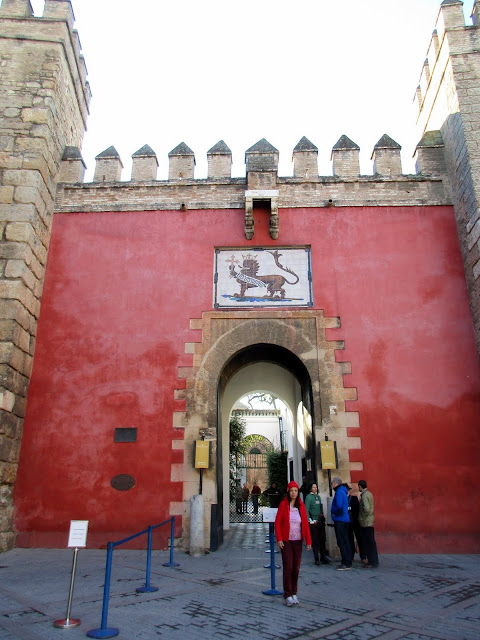
The weather was great in late November, early December and
we were glad to avoid the heat prevalent in summer. As a trade off, it became
dark at 6 pm cutting short some extensive sight seeing. It worked out well for
us overall. We had a lovely time and here are the details:
OUR ITINERARY:
DAY 1, Nov 21, 2015: MADRID: The royal palace, Sabatini gardens, Temple of Debod
STAY: Hotel Principe Pio 3 nights Nov 21-24
DAY 2 Nov 22, 2015: Day trip to Segovia: Roman Aqueduct, old town, Segovia cathedral, Alcazar [fort], teh back to Madrid, El Retiro park, Cybele palace
DAY 3 Nov 23, 2015: Day trip to Toledo: Puerta de Bisagra, Cathedral, Giralda[bell tower], Alcazar, Museum of Santa Cruz
DAY 4 Nov 24, 2015: Granada: Plaza Nueva, Cathedral, Mirador de san Nicolas, Carrera del Darro
Stay: Hotel Guadalupe, 2 nights
DAY 5 Nov 25, 2015: Granada: Alhambra
DAY 6 Nov 26, 2015: Sacromonte in Granada, then 10 am bus to Seville: Cathedral,
Stay: Hotel Convento la Gloria, 3 nights
DAY 7 Nov 27, 2015: Day trip to Cordoba: La Mezquita, Giralda, Roman bridge, Alcazar, patios, Jewish quarter
DAY 8 Nov 28, 2015: Seville: Alcazar, Jewish quarter, 7.30 PM flight to Madrid
STAY: Air rooms, Madrid airport
DAY 9 Nov 29, 2015: Early morning flight back home
Nov 21, Saturday, 2015, Temp 15°C to 8°C:
Madrid-Barajas Airport:
Son's plane due at 9.30 am came only after 11 am. My plane due at 8 am had come in at 9.30. There were seats in the bag claim area…was easy to wait around in... not crowded as the general area.
Both planes came into T1. We later took the
shuttle to T4 for taking the train to city center. Bought the tickets the C1
Cercania train to Principe Pio at the machine in T4 after taking the shuttle
from T1.
Below is the map showing the Cercania trains. Our C1 is in light blue from Aeropuerto to Principe Pio as we can see:
Too much delay waiting for the train and once the train came
in, it started only after 15 min.
Could have taken taxi from T1 at flat €30 to hotel.
Could have taken taxi from T1 at flat €30 to hotel.
Places Visited on Nov 21:
The royal palace, Sabatini gardens, Temple of Debod
The map below marks all the attractions in Madrid
Hotel Principe Pio:
We stayed in Hotel Principe Pio 3 nights Nov 21-24 and loved
the classy decor.
Location is convenient...It's a 500 m walk from the Principe Pio station where our C1 Cercania train from the airport arrived.
It's a shorter walk to Plaza de España metro for our day trips toSegovia from Moncloa and Toledo from Atocha stations... the metro map is a little down the page and we can see the stop locations on it
We had a nice view of the palace from our window. After checkin we hurriedly set off to the Palace. In peak tourist season, one needs to book tickets online. We have seen pictures of huge lines in the palace square. There is a separate line for those with booked tickets. We joined a line with a couple of people before us, bought the ticket and went in; an advantage of visiting off season. Another of course was the cool pleasant weather!

Location is convenient...It's a 500 m walk from the Principe Pio station where our C1 Cercania train from the airport arrived.
It's a shorter walk to Plaza de España metro for our day trips to
We had a nice view of the palace from our window. After checkin we hurriedly set off to the Palace. In peak tourist season, one needs to book tickets online. We have seen pictures of huge lines in the palace square. There is a separate line for those with booked tickets. We joined a line with a couple of people before us, bought the ticket and went in; an advantage of visiting off season. Another of course was the cool pleasant weather!

Palacio Real de Madrid:

The Palacio Real de Madrid (Royal Palace of Madrid) is where state ceremonies,
official banquets and other state functions take place. The King lives in Zarzuela Palace ,
which is just outside of Madrid .
The Palacio Real or Royal Palace Paris is the biggest, followed by the Sultan of Brunei's palace, the Apostolic Palace in the Vatican , the Forbidden City in China and then the Royal Palace of Madrid [we've visited all except the Brunei one and reports are in this blog, hit the About tag above for navigation and links]
The west wing of the palace is home to the Armería Real, the royal army museum. It contains a beautiful collection of armory, including King Charles V's armour suit.
The palace is stunning but no pictures are allowed. Every little detail is awesome. The floors are a delight with intricate parquet mosaic. The ceilings have terrific frescos. Each chandelier has a different and beautiful design. It was well worth the visit.
These are pics from the official website
Palacio Real has 1038 rooms. Some of the sumptuous rooms accessible to visitors
are the 400 sq m large dining room, the Sala de Porcelana (China Room) and the
Salón del Trono (Throne Room) with red velvet walls.

Sala de Porcelana (China Room) in detail
Note the folds of the robe...

These are our pics
There are statues to their famous royals in the hallways.

The Sabatini Gardens are part of theRoyal
Palace in Madrid , Spain
They are named after Francesco Sabatini (1722–1797), an Italian architect of the 18th century who designed, among other works at the palace, the royal stables of the palace, previously located at this site. He also made the retablo of the Segovia cathedral... pics are at the end of this post.
Nov 22 Sunday, 2015, 9°C-3°C
Segovia was colder than Madrid and it even
snowed later in the day!
The city of Segovia is located 50 miles north of Madrid and is only one hour away by bus, two hours by train (Cercanias) or thirty minutes by AVE (high speed train). The Bus Station is close to the City Centre and the aqueduct and easily doable on foot in a few minutes. Google Map showing the walk:
The aqueduct transports water from Fuente Fría river, situated in the nearby mountains, 17 km (11 mi) from the city. It runs another 15 km (9.3 mi) before arriving in the city.
The water is first gathered in a tank known as El Caserón (or Big House), and then led through a channel to a second tower known as the Casa de Aguas (or Waterhouse). There it is naturally decanted and sand settles before the water continues its route. Next the water travels 728 m (796 yd) on a one-percent grade until it is high upon the Postigo, a rocky outcropping on which the old city center, the Segovia Alcázar, was built.
Segovia .
Its façade is covered by granite blocks carved into pyramid-shaped reliefs.
There is a portal with a round arch.

Sala de Porcelana (China Room) in detail
Note the folds of the robe...

These are our pics
King Ferdinand and Queen Isabella are the most famous
royalty of Spain .
We get to see their statues in many public places, so it’s good to know a
little about them…
Isabella and Ferdinand are known for completing the
Reconquista (conquering back territory from Moorish kings), ordering conversion
or exile of their Muslim and Jewish subjects in the Spanish Inquisition, and
for supporting and financing Christopher Columbus's 1492 voyage that led to the
opening of the New World and to the establishment of Spain as the first global
power who dominated Europe and much of the world for more than a century.
Queen Isabella was not just the spouse of King Ferdinand but
had territories in her own right. They had a prenup on reigning rights and were
the most successful of Spanish royalty...
Christopher Columbus got the financial support for his expeditions from Isabella after a no from the royalty ofItaly , Portugal ,
England Spain
Christopher Columbus got the financial support for his expeditions from Isabella after a no from the royalty of
Towards the end of her life, family tragedies overwhelmed Queen
Isabella, although she met these reverses with grace and fortitude. The death
of her beloved son and heir and the miscarriage of his wife, the death of her
daughter Isabella and Isabella's son Miguel (who could have united the kingdoms
of the Catholic Monarchs with that of Portugal), madness of daughter Joanna and
indifference of her husband Philip the Handsome, and daughter Catherine's
plight after annulment by her husband Henry VIII made her dress in black for the
rest of her lifetime.
It was good to ponder over the royalty while enjoying the
grandeur of the palace.
We exited the palace after a couple of hours.
We exited the palace after a couple of hours.
Almudena Cathedral:
Almudena Cathedral is also in the palace square but it
closed early, so we could not see the interior.
We visited Campo Del Moro and Sabatini Gardens

The Sabatini Gardens are part of the
They are named after Francesco Sabatini (1722–1797), an Italian architect of the 18th century who designed, among other works at the palace, the royal stables of the palace, previously located at this site. He also made the retablo of the Segovia cathedral... pics are at the end of this post.
We returned to our hotel. Had some food and walked to The
Temple of Debod.
Temple of Debod:
The Temple of Debod (Spanish: Templo de Debod) is an ancient
Egyptian temple from early 2nd century BC which was dismantled and rebuilt in Madrid , Spain

The temple was built originally 15 kms (9.3 mi) south ofAswan in southern Egypt
very close to the first cataract of the Nile .
In 1960, due to the construction of the Aswan High Dam and the consequent threat posed by its reservoir to numerous monuments and archeological sites, UNESCO made an international call to save this rich historical legacy andSpain stepped
up.
As a sign of gratitude for the help provided bySpain
in saving the temples of Abu Simbel, the Egyptian state donated the temple of Debod
to Spain
in 1968.

The temple was built originally 15 kms (9.3 mi) south of
In 1960, due to the construction of the Aswan High Dam and the consequent threat posed by its reservoir to numerous monuments and archeological sites, UNESCO made an international call to save this rich historical legacy and
As a sign of gratitude for the help provided by
We walked back via the Plaza de España admiring the Monument
to Cervantes (author of the famous Don Quixote).
We had planned day trips for the next 2 days and we had also
booked tickets much earlier to avail the discounts.
We called it a day after buying some milk, yogurt, fruits etc from a neighborhood store.
We called it a day after buying some milk, yogurt, fruits etc from a neighborhood store.
Nov 22 Sunday, 2015, 9°C-3°C Madrid :
Segovia:
We used Sepulvedana express bus for day trip Madrid to Segovia
(confirmed return ticket at counter for specific time). The Sepulvedana bus
goes from the MONCLOA Intercambiador on Metro lines 3 and 6. We had bought
tickets online for the 9am express bus Madrid Moncloa to Segovia . (http://www.lasepulvedana.es/ )
Moncloa was an easy metro ride from Plaza Espana stop. (We had bought the 10 ticket bunch forMadrid metro-bus and it
was very useful. Metro very easy to use…)
Moncloa was an easy metro ride from Plaza Espana stop. (We had bought the 10 ticket bunch for
Here's the metro map, all our relevant stops are circled: we can see Principe Pio on the dark blue and grey lines and it is in the extreme left. Plaza de España stop is also on the dark blue and yellow lines and we can see it going to Moncloa on the yellow line. As said above, our hotel was just between Principe Pio and laza de España stops and it was an easy walk...
Madrid-Segovia was 45 min bus ride
The city of Segovia is located 50 miles north of Madrid and is only one hour away by bus, two hours by train (Cercanias) or thirty minutes by AVE (high speed train). The Bus Station is close to the City Centre and the aqueduct and easily doable on foot in a few minutes. Google Map showing the walk:
We passed by historic buildings like Iglesia de San Martín (Church of St. Martin
The Roman Aqueduct
The Roman Aqueduct is an astounding engineering feat and one
of the best preserved from the Roman empire in Spain . It was built at the end of
the 1st century to supply water to the roman military fort on the hill and has
been used until the middle of the 19th century. There are 166 stone arches on
granite ashlars and they have been set
without cement or mortar. The aqueduct is the highest and most imposing at
the Azoguejo Square .
The aqueduct gets water from the Fuenfria Spring that is
located in the mountains that are 17 km away. At its tallest, the aqueduct is
28.5 m tall. The structure has both single and double arches that are supported
by pillars.
The aqueduct is also known as the “Puente de Diablo” or Devil’s Bridge. In olden times, people had to
collect water from the river which ran far off over the mountains...A pretty
girl used to climb, every day, to the very top of the mountain and return with
her pitcher full of water. Fed up of this daily toil, she made a wish to the
Devil to build some means to bring water so that she would no longer need to go
up and down every morning with her pitcher. Lucifer granted her wish, asking
for her soul in return if he managed to finish the aqueduct before the cockerel
crowed.
Just as he was about to lay the last stone, the cockerel crowed... the Devil lost his wager and the girl kept her soul. In the gap that remained, the statue of the Virgin of Fuencisla, patroness of the city, stands today. The holes on the stones are the marks of the devil's fingers.
Just as he was about to lay the last stone, the cockerel crowed... the Devil lost his wager and the girl kept her soul. In the gap that remained, the statue of the Virgin of Fuencisla, patroness of the city, stands today. The holes on the stones are the marks of the devil's fingers.
The aqueduct constitutes single blocks without any mortar to
bind the stones. In order to do this an ingenious equilibrium of forces is
used that challenges/conquers gravity
The aqueduct transports water from Fuente Fría river, situated in the nearby mountains, 17 km (11 mi) from the city. It runs another 15 km (9.3 mi) before arriving in the city.
The water is first gathered in a tank known as El Caserón (or Big House), and then led through a channel to a second tower known as the Casa de Aguas (or Waterhouse). There it is naturally decanted and sand settles before the water continues its route. Next the water travels 728 m (796 yd) on a one-percent grade until it is high upon the Postigo, a rocky outcropping on which the old city center, the Segovia Alcázar, was built.
It had been kept functioning throughout the centuries and
preserved in excellent condition. It provided water to Segovia until the mid 19th century
We were at at the Azoguejo
Square and admired the aqueduct fashioned from the
granite stones of the Guadarrama
Mountains
Then we walked up the slope and enjoyed the view from Mirador Del Postigo also
Then we walked up the slope and enjoyed the view from Mirador Del Postigo also
Statue of the Virgin of Fuencisla, patroness of the city...
This is the last stone the Devil missed putting in, thus losing the bet to complete the aqueduct before the cockrel crowed...
This is the last stone the Devil missed putting in, thus losing the bet to complete the aqueduct before the cockrel crowed...
We then walked through the lovely old town.
Casa de los Picos House
This is a famous palace in
The De la Hoz family owned the house in the past and their coat of arms is displayed above the balconies. The entrance and patio has tiles from Talavera.
Today the building has the
This is the Monument to Juan Bravo, Segovia .
Juan Bravo (c. 1483– 1521) was a leader of the rebel Comuneros in the Castilian Revolt of the Comuneros (an uprising by citizens ofCastile against the rule of Charles
V, Queen Isabella's 16 yr old grandson, son of her mad daughter. Charles had
been raised in the Netherlands
with little knowledge of Castilian. He arrived in Spain in October 1517 accompanied
by a large retinue of Flemish nobles and there was rebellion).
Juan Bravo was captured, and beheaded the day after the battle.
Juan Bravo (c. 1483– 1521) was a leader of the rebel Comuneros in the Castilian Revolt of the Comuneros (an uprising by citizens of
Juan Bravo was captured, and beheaded the day after the battle.
Segovia Cathedral:
We walked to the Segovia Cathedral.
This massive cathedral was built between 1525-1577 in a late Gothic style, outdated elsewhere in
The Gothic vaults are 33 meters high by 50 meters wide and 105 long. The bell tower reaches almost 90 meters.
The retablo mayor, or main reredos, of the cathedral was
carved by Francisco Sabatini, and is dedicated to the Virgin of the Peace.
It is adorned with the Segovian Saints Frutos, Geroteo, Valentín and Engracia
It is adorned with the Segovian Saints Frutos, Geroteo, Valentín and Engracia
The whole cathedral is very impressive!
After that visit, we walked to the Alcázar of Segovia… it had started to rain/snow and it was pretty cold. We scampered inside the Alcázar.
After that visit, we walked to the Alcázar of Segovia… it had started to rain/snow and it was pretty cold. We scampered inside the Alcázar.
Alcázar:

The Alcázar of

The first reference to this particular Alcázar was in 1120, around 32 years after the city of
We got to the terrace after climbing the 156 steps of "
We walked back into the town. It was a pleasure walking
through age-old narrow streets… like time travel into a by-gone era!
When a car comes along these narrow streets, we hop on to the pavement!
When a car comes along these narrow streets, we hop on to the pavement!
It was fun looking at the craft pieces in the various shop
windows...
aquí vive la mejor madre: Here lives the best mother...
aquí vive la mejor abuela: Here lives the best grandma
We went to the bus station, confirmed our return ticket
slot. Had some food and got back on the bus and arrived back in Madrid .
This is the Puerta de Alcalá (Alcalá Gate),a Neo-classical monument in the Plaza de la Independencia (
El Retiro:
We then walked on to El Retiro, Buen Retiro
Park Madrid …
1.4 km2 (350 acres).
The park belonged to the Spanish Monarchy until the late 19th century, when it became a public park. It is filled with beautiful sculpture, fountains and monuments, galleries, a peaceful lake
The park belonged to the Spanish Monarchy until the late 19th century, when it became a public park. It is filled with beautiful sculpture, fountains and monuments, galleries, a peaceful lake
This is the Monument to King Alfonso XII in the background behind the artificial lake. Monument consists of a grand colonnade alongside a pond in El Retiro, with several sculptures surrounding an equestrian statue of the king, with everything constructed in bronze and marble
Equestrian statue of King Alfonso XII was cast in Bronze in
1904. In the central base of the monument are the statues "La Paz "
("Peace"), "La Libertad" ("Freedom") and "El
Progreso" ("Progress"). In the pedestal, there are three bronze
reliefs. Stairs descend from the central monument toward the lake.
After watching the sun set in this lovely setting, we went to Plaza de Cibeles.
We bought the ticket to the Observation deck of Cybele Palace
Cybele Fountain (1782, reign of Charles III )
This fountain is named after Cybele, a Phrygian goddess who had a significant cult in
We had meant to visit the Prada museum that evening but
could not fit it in. It was a matter of regret but we had thoroughly enjoyed all
the sights we had managed to see.
covers our day trip to Toledo
Our Videos:
has our video on Madrid, Segovia and Toledo.






















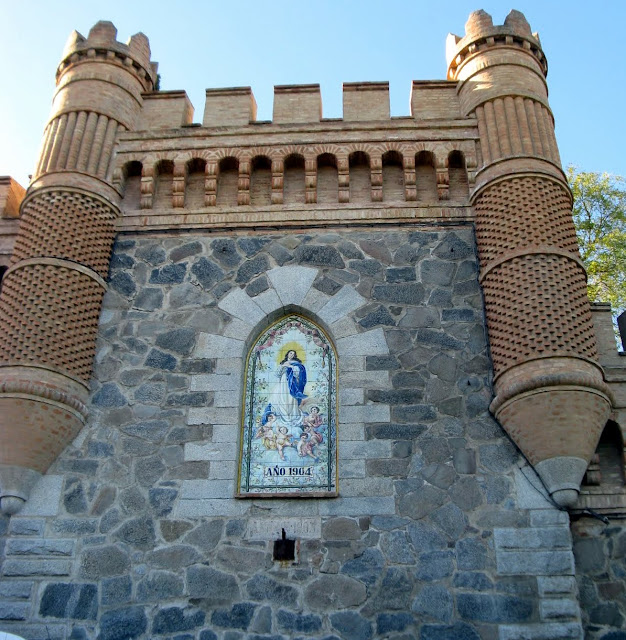
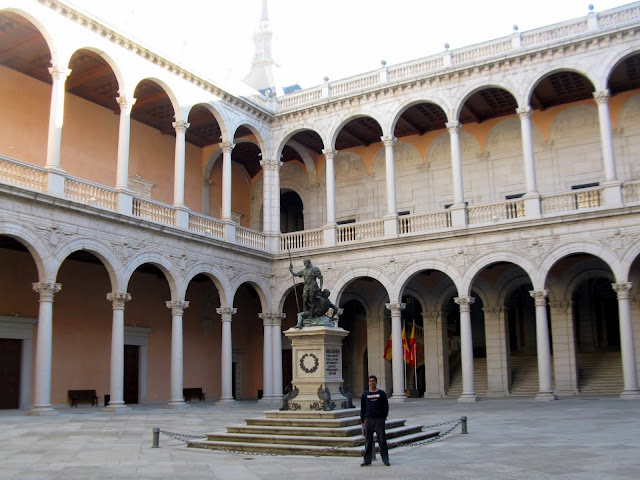





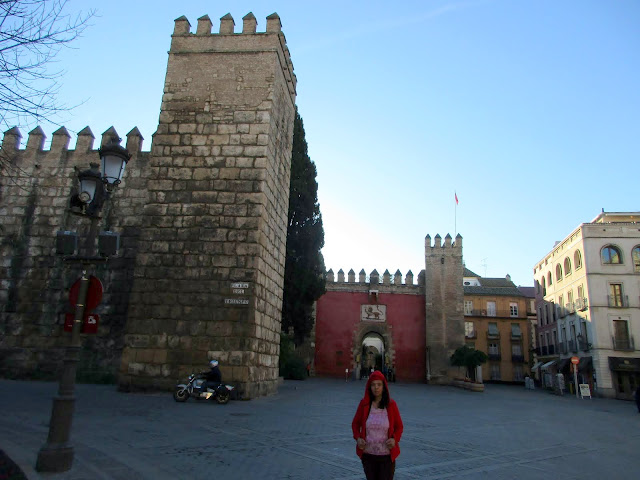


















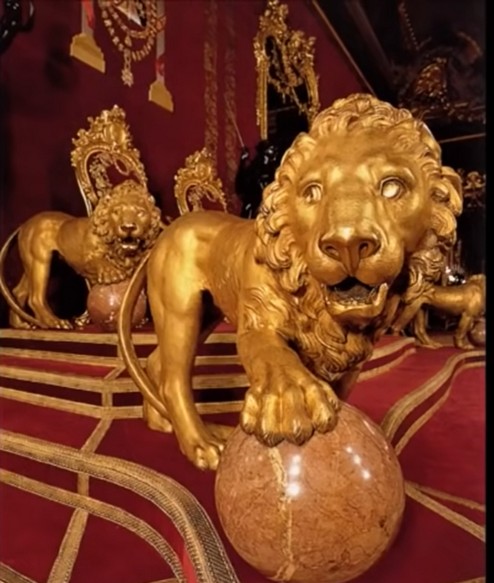






































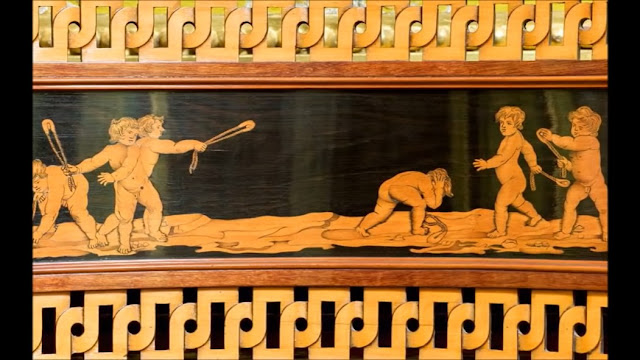

















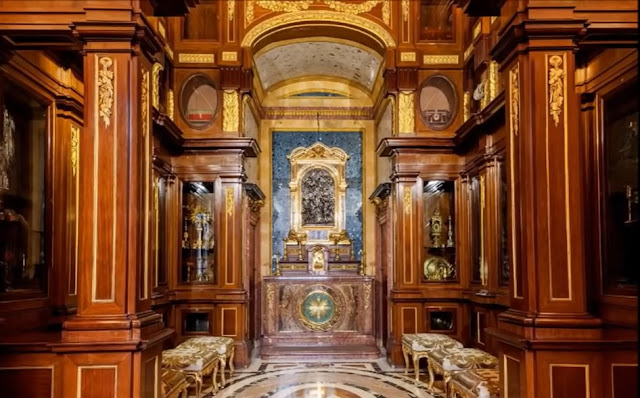





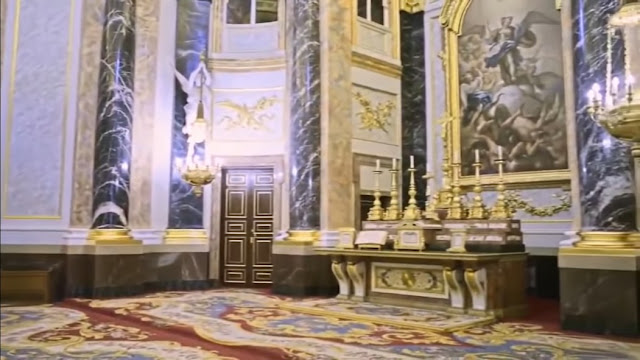













































































This comment has been removed by a blog administrator.
ReplyDeleteSpam advertising by Yano Rivera deleted.
ReplyDeleteThis comment has been removed by a blog administrator.
ReplyDeleteSpam advertising by tour operator deleted.
Delete